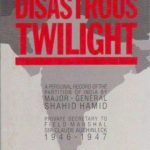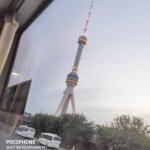Keynote address by Lt. Gen. Khalid Ahmed Kidwai, NI, HI, HI(M) (Retd.), at SVI, Islamabad
Note: On October 8-9, 2024, the Strategic Vision Institute (SVI) hosted the “Islamabad Non-Proliferation Conference 2024,” bringing together an esteemed group of global experts and scholars for in-depth discussions on key non-proliferation challenges. The conference featured prominent participants from the Institute of World Economy and International Relations of the Russian Academy of Sciences (IMEMO RAS), the Center for Energy and Security Studies (CENESS), Russia, China Institute of Contemporary International Relations (CICIR), China, Carnegie Endowment for International Peace, US, Royal United Services Institute(RUSI), UK, Moscow State Institute of International Relations (MGIMO-University), Saint Petersburg State University, Shanghai University, Peking University, University at Albany, State University of New York and University of Birmingham etc.
Lt. Gen. Khalid Ahmed Kidwai NI, HI, HI(M), Advisor Development National Command Authority, delivered a pivotal keynote address at the conference, titled Post-1998 Nuclear Management in Pakistan: Institution Building, Legislative and Policy Measures. His presentation offers an in-depth analysis of Pakistan’s nuclear governance since 1998, emphasizing the evolution of institutional frameworks, legislative progress, and strategic policy directions. Recognizing the strategic importance of his insights, Interaction is pleased to present this notable speech in these pages for the enrichment of our readers.
- Ladies and gentlemen. Assalam O Alaikum and good morning.
I feel greatly honored to have been invited by the Strategic Vision Institute (SVI) to speak on a subject that will test my recall abilities from nearly a quarter century ago. The topic is: Post-1998 Nuclear Management in Pakistan: Institution Building, Legislative and Policy Measures
- I think all Pakistanis understand the importance of 28th May and 30th May 1998 as two historic and critical dates for Pakistan’s national security. The nuclear tests conducted by Pakistan’s scientists and engineers on these two dates represent the firm establishment of a strategic balance in South Asia which till then had eluded Pakistan. A covert nuclear capability, whose journey had started in 1972, was now announced to the world as an overt nuclear weapons capability, especially for the benefit of our adversary in the east, to register the implications arising out of the restoration of the disturbed strategic balance and the offsetting of the relative conventional asymmetry.
- When one looks back at the history of Pakistan’s nuclear program since the famous Multan meeting of nuclear scientists called by President Zulfiqar Ali Bhutto in 1972, 52 years ago to be exact, one can see a very clear line of separation between the two eras of 26 years each:
- The Nuclear Program in the pre – 28th – 30th May 1998 era.
- The Nuclear Program in the post – 28th – 30th May 1998 era.
- What was achieved by the celebrated Pakistani scientists and engineers in the pre-28th – 30th May 1998 era, 26 years to be exact, and specifically on those two historic days was the culmination of a heroic and dedicated national scientific and engineering effort underwritten by a consistently fierce political will, commitment and national resolve at the government levels, irrespective of the politics of the day, to make Pakistan a nuclear weapons power. Pakistanis may or may not have eaten grass but the galaxy of Pakistani scientists and engineers through their successful experiments demonstrated to the world on those two days a Pakistani nuclear weapons capability as they responded in style to the Indian nuclear tests of 11th and 13th May 1998.
- On the other hand, the post-nuclear tests era from May 1998 onwards, again 26 years to be exact, for which Allah Almighty chose some of us to carry forward the good work of the scientists, represents the operationalization, consolidation, strengthening and securing of Pakistan’s nuclear capability physically as well as diplomatically according to the policy of Credible Minimum Deterrence initially, and transiting subsequently to the policy of Full Spectrum Deterrence. Today’s talk is about the 2nd era.
- The story of this 2nd era commences with my induction into the Pakistan Army’s General Headquarters on 30th May 1998, the day when Pakistan conducted the second series of tests at Chaghi. To begin with, I was tasked to develop a proposal for the establishment of a national command and control system for Pakistan now that Pakistan had declared its nuclear weapons capability overtly. My small team and I, which included my old friend and colleague Dr. Naeem Salik, head of the SVI now, as one of the pioneers with his expertise in arms control affairs, put our heads together to complete the assignment to the best of our professional ability. By December 1998 our proposals and recommendations were approved by the then Chief of Army Staff General Pervez Musharraf. Simultaneously, I was asked to take over as the first Director General of the proposed Strategic Plans Division (SPD), the proposed secretariat to the proposed apex body National Command Authority (NCA). Thus began the journey of over 15 years of my association with the nuclear program, the beginning of what I have referred to as the 2nd era from May 1998 onwards, and in the process, the pursuit of institution building.
- Before proceeding further, I would like to present before you the basic outline of the command and control management structure that was approved in 1998. I am happy to say that despite the journey of 26 years, the fundamentals of the basic management structure in terms of conception have largely remained intact. Of course, like any dynamic organization, there have been improvements, additions, and deletions, as SPD went about its operationalization business in the ensuing years.
Management structure of Pakistan’s nuclear capability
- Command and Control Organization:In the post-May 1998 period, the establishment of an effective Command and Control Organization, from scratch, had become a strategic imperative, not only to bring harmony in the command and control mechanism, nuclear policy and development strategy, but also to provide credible stability to our strategic deterrence. Furthermore, its formal announcement was necessary to transmit the right signals at the regional and international level that Pakistan’s nuclear capability was being handled in a professional and institutionalized manner under an effective command and control system. This command and control structure, though in place for over a year, was formally announced on 2 February 2000 and was well received. The Command and Control Organization is structurally grouped under four constituents:-
- Constituent 1 – National Command Authority (NCA).
- Constituent 2 – Strategic Plans Division (SPD).
- Constituent 3 – Strategic Force Commands.
- Constituent 4 – Scientific Strategic Organizations.
- Constituent-1:National Command Authority (NCA):
The NCA comprises of nine important decision-makers of the country and includes the political and the military leadership. The Chairman of the NCA is the Prime Minister. The NCA, the apex decision-making body, formulates policy and controls all aspects of Pakistan’s nuclear capability including deployment and, if ever necessary, the use / employment of strategic assets. It has two committees: the Employment Control Committee (ECC), and the Development Control Committee (DCC), functioning separately for policy formulation, employment, and development aspects respectively.
- Organization of NCA
- Main functions of employment control committee
- Reviews from time to time the latest information on the strategic threat.
- Is responsible for policy directions during peacetime and has the authority to order, control and direct use/ employment of tri-services strategic forces during war.
- Gives policy directions and guidance for evolution of doctrines and employment policy based on technical capability and threat assessment.
- Lays down guidelines for an effective command and control system to safeguard against accidental or unauthorized use.
- Main Functions of the Development Control Committee
- Exercise technical, financial and administrative control on the Scientific Strategic Organizations.
- Oversee the systematic development of strategic weapons programs as per the approved Development Strategy.
- The committee is empowered to raise facilities/ organizations and integrate existing ones within laid down objectives.
- It has full financial and administrative powers while remaining within the allocated budget.
- Constituent – 2: Strategic Plans Division (SPD):
SPD is the secretariat to the NCA, and is entrusted with the task of developing and managing Pakistan’s nuclear, and space programs in all dimensions. SPD functions directly under the Prime Minister and the Chairman Joint Chiefs of Staff Committee, and is headed by DG SPD. It draws its legal status from the NCA Act 2010. The main functions of SPD:
- Formulation of the country’s nuclear policy, nuclear strategy and nuclear doctrine.
- Formulation of short and long term development strategy and force goals for tri-services strategic forces, within the ambit of national power potential, nuclear doctrine and arms control regimes, besides overseeing its systematic implementation.
- Formulation of strategic/operational plans at the tri-services level for movement, deployment and employment of strategic forces.
- Formulation of the chain of command/authority.
- Undertake comprehensive measures for the safety and security of strategic assets.
- Assist the Prime Minister and Chairman Joint Chiefs of Staff Committee in exercising control over strategic organizations, and coordinate their financial, technical, developmental and minimal administrative aspects.
- Provide military inputs and coordinate with the Foreign Office, CD Geneva, and key ambassadors at Vienna, New York, and Washington, on arms control and disarmament affairs/strategic issues which impinge upon the nuclear capability.
- Coordinate the establishment of a Strategic C4I2SR system for the NCA, SPD, and Strategic Forces for command and control of strategic capability ensuring real-time linkages with conventional Services C4I2SR networks.
- Constituent-3: Strategic Forces Commands at Each Service Level:
Exclusive Strategic Forces Commands have been raised in all three services. The services retain relevant training, and technical and administrative control over their respective Strategic Forces. However, operational planning and employment control rests entirely with the NCA under the overall military direction of Chairman JCSC. SPD coordinates all related aspects with the Services Headquarters. The Army Strategic Force Command, the Naval Strategic Force Command, and the Air Force Strategic Commands have been established.
- Constituent-4: Strategic Organizations:
This constituent comprises various Commissions and Organizations, commonly referred to as the Scientific Strategic Organizations. These function under the NCA/SPD and deliver on assigned strategic projects.
- Having given you an overview of the management structures and the institution building during the early years, post-1998, I shall give a broad insight into some of the challenges that we faced as we proceeded on our long journey to operationalization.
- First Challenge: As we settled down in our new premises in the Chaklala Garrison, the newly created SPD started to find its feet, fill in the necessary manpower, and commence its work in all seriousness with the clear advantage of a confidence that can only come from ignorance. The very first challenge that I would like to mention without any hesitation was that of overcoming our ignorance of matters nuclear whether strategic, scientific, organizational, operational, or even the locations of the various scientific strategic organizations, which were spread far and wide across the country, the important personalities and individuals as to who was who, and in which strategic organization. It was a truly mysterious world out there and the level of secrecy had all along been so high that even asking questions invited hushed answers sometimes in sign language.
- The other side, by which I mean the community of scientists and engineers, was also not quite sure as to how much of the classified information they could share with the new gentleman placed in charge of Pakistan’s nuclear program. It took time to educate and familiarize ourselves with the new environments, with people who had just recently emerged as national heroes, the new and unfamiliar scientific jargon, and most importantly, where stood the program and what needed to be done from here on.
- One thing was clear that the newly formed SPD, not even fully manned yet, had hit the ground running. There wasn’t much time to waste in getting on with the further development and operationalization phases. Nevertheless, patience, persistence, and good manners helped us in bringing down some of the mental barriers. From there on, we became an accepted part of their team, and the mutual respect, camaraderie, and even friendships developed then exist till today. First challenge overcome!
- Developing a Vision: The next challenge, turned into an opportunity, was based on the early identification and conception of mid-term and long-term visions, as to where we wanted the program to be in a given time frame, in harmony with the needs of the policy of Credible Minimum Deterrence. Thereafter, putting heads down for focused work on seven main segments, and a few supporting ones, all moving in parallel, because most of the work was inter-linked. These seven segments, when gradually integrated into one wholesome tri-services strategic capability, or a “force in being”, a term that I learnt from my naval friends at the war college, were to be based on the elements of ‘credibility’ of the capability as well as the ‘minimum’ numbers of weapons assessed, which, in our opinion, would radiate the strategic effects of ‘deterrence’ of aggression on the large military machine of our adversary. Mind you, no staff college or war college prepares one for the challenge of conceiving and developing an operationalized national nuclear capability of a newly declared nuclear power. No ready-made Directing Staff solutions. All of these had to be based on our best professional judgments and on-job learning. The seven main segments, each of which was a challenge in itself, were:
- One: The Establishment of an Institutionalized Nuclear Command and Control Structure. As explained earlier, it comprised of a National Command Authority (NCA), the Strategic Plans Division (SPD) as a one-window secretariat, the three tri-services Strategic Forces in the field to handle the national nuclear capability, and the Scientific Strategic Organizations. This was based on the approval that had been accorded to our initial proposals that had been presented sequentially, to the COAS, and subsequently to two other forums of the Joint Chiefs of Staff Committee (JCSC), and the National Security Council (NSC) of the Federal Government.
- Two: The Conception of a National Nuclear Policy with a Specific Vision. It was necessary to identify as to where Pakistan’s nuclear capability ought to be for at least a decade beyond the scientific experiments of May 1998, say, by the year 2010. This was based on the classic military methodology of assessment of the likely geo-political and strategic environments in the coming decade, the nature of the evolving threat with an eye on strategic developments across the border, and own technical, operational, and financial capabilities and capacities.
- Three: Based on the Foregoing Assessments, Translation of the National Nuclear Policy, or Vision, into a Robust Force Development Strategy. It involved the raising, equipping, housing, and training of the three tri-services strategic forces, as the end-users of the operationalized capability, as per the then-approved policy of Credible Minimum Deterrence.
- Four: In Line with the Force Development Strategy, the Tasking to the Strategic Organizations of the Force Goals including Oversight. Here was the real-time sweat and hard labor by the strategic organizations to develop and deliver in adequate numbers, in tangible terms, the inventory of the variety of nuclear weapons for the three tri-services strategic forces, including weapons earmarked for the First and Second Strike capability.
- Five: Conceiving and Developing a Secure and Efficient C4I2SR Capability. This stands for Command, Control, Communications, Computers, Intelligence, Information, Surveillance and Reconnaissance. The project of conceiving and developing a modern strategic C4I2SR system was a technical and operational challenge. As you might note, the acronym C4I2SR comprises of eight elements, each one of which is a complete system in itself, to be conceived, developed, tested, integrated, and then fielded within the length and breadth of the nuclear infrastructure to provide fool proof command and control capability to the NCA, SPD, and the Strategic Forces.
- Six: The Securing of all of the Foregoing Elements of Pakistan’s Nuclear Capability against External and Internal Threats. One of the most important elements, under the broader rubric of nuclear security, was to plan, deploy and ensure fool proof security for the vast nuclear infrastructure of Pakistan both civil and military. This was one area where we were very clear that there was no margin for error at all. Pakistan was in a fish bowl and the world was watching intently. You would recall that due to the worldwide politico-military fallout of 9/11, the US invasion of Afghanistan and Iraq, the war on terror and its severe internal fallout inside Pakistan, nuclear security particularly became a top priority area. Under the shadow of the then prevailing adverse geo-political environments including the sharp international focus on the safety and security of Pakistan’s nuclear weapons, and the negative international narrative or mantra of the possibility of “Pakistan’s nuclear assets falling into wrong hands”, further fueled by hostile adversaries, there was zero margin for error. We realized that in those difficult days when internal terrorist attacks including some against Pakistan’s conventional military installations were being conducted with relative impunity, any incident in the domain of the SPD, howsoever big or small, would be just the opportunity that the international media and our adversaries might be waiting for to blow out of proportion, and further the purported myth that Pakistan’s nuclear weapons were not safe. SPD simply could not afford to assign anything but the highest priority to nuclear security. We therefore invested much time, effort, and funds in ensuring that the nuclear security of Pakistan’s nuclear infrastructure would be as foolproof as was humanly, professionally, and financially possible. Allah be praised, we came out of that particular difficult phase safe and unscathed. Consequently, it was quite satisfying to learn every once in a while some of the influential international voices, which could verify independently through their National Technical Means (NTMs), declared formally that Pakistan’s nuclear weapons were in safe hands. For example, just one quote amongst many that I can recall came in David Sanger’s book ‘Confront and Conceal: Obama’s Secret Wars and Surprising Use of American Power, “….the process has impressed as to how seriously the Pakistanis take nuclear security, perhaps more seriously than anyone else in the world.” Talking of challenges, well, nuclear security was certainly one of the bigger ones.
- Seven: Last but not Least; the Conduct of Nuclear Diplomacy. It was vital that the SPD, the Foreign Office, and the relevant Pakistani diplomats especially those at CD Geneva, Vienna, Washington, and New York work in concert with the objective of preventing, and where necessary pre-empting, any adverse fallout of international nuclear diplomacy that might be detrimental to the smooth development of Pakistan’s nuclear program and its objectives as per our vision. It was an ongoing challenge that was handled superbly by the Pakistani diplomats year after year, and it continues on and off even now.
- In the context of nuclear diplomacy, a linked challenge that we turned into an opportunity, was the never-ending saga, which too continues till today, of layers upon layers of sanctions and denials imposed on Pakistan by the international actors with the clear intent of preventing the further development of Pakistan’s nuclear program and squeezing it as much as possible. These sanctions and denials went to the extent of being ridiculous, indiscriminate, and often devoid of any logic in their application. The list of entities that were sanctioned fairly regularly sometimes included universities and private sector companies that were miles away from the nuclear program. The sordid story continues till today. Only last month, some more meaningless sanctions were imposed on a Pakistani entity.
- What was our response and standard policy? Very predictable and simple. Go indigenous. It took time, funding, and patience but our scientists and engineers at the strategic organizations are professionally in a different class altogether – committed and motivated professionals who love challenges. I do not recall a single project which we decided to develop indigenously and on which they did not deliver. The sanctions and denials invariably worked to our advantage by compelling us to become self-reliant. Amongst many other success stories of our times, the indigenization of the nuclear infrastructure is one big one. And this is something that was not an SPD effort alone. The story goes back to the earliest days of the commencement of Pakistan’s nuclear program. Both the eras that I have talked about, 52 odd years cumulatively, are replete with success stories of projects and facilities being developed locally when compelled by sanctions. Perhaps we owe a small vote of thanks to our detractors who inadvertently enabled SPD in its task of institution-building in Pakistan’s nuclear program.
- I shall now say a few words on policy measures undertaken. By 2011, a little over a decade since May 1998, we had reached a point in our force development strategy when we felt confident enough to transition Pakistan’s nuclear policy from Credible Minimum Deterrence to Full Spectrum Deterrence.
- During the period of this decade-plus, with the development of a variety of ballistic missiles, the tactical nuclear weapon Nasr together with a family of highly accurate low-flying cruise missiles Babur and Ra’ad for a variety of land, air, sea, and under-sea platforms, the long-range Shaheen III with a range of 2750 km, the Ababeel with a Multiple Independently Targeting Re-entry Vehicle (MIRV) capabilities, by 2011 the entire spectrum of nuclear weapons was covered horizontally and vertically. India’s vast eastern and southern geographical dimensions, including its outlying territories, were fully covered by Pakistan’s various nuclear weapons.
- Today, Alhamd o Lillah, Pakistan’s Full Spectrum Deterrence capability, while generally remaining within the larger philosophy of Credible Minimum Deterrence, comprises horizontally of a robust tri-services inventory of a variety of nuclear weapons, a triad if you may. It is held on land with the Army Strategic Force Command (ASFC), at sea with the Naval Strategic Force Command (NSFC), and in the air with the Air Force Strategic Command (AFSC). Vertically the nuclear spectrum encapsulates progressively increasing destructive weapon yields, and range coverage at three tiers: strategic, operational, and tactical to cover India’s vast eastern and southern geographical dimensions, including its outlying territories.
- Cumulatively, there is an awesome amount of deterrent nuclear power available to the NCA/SPD. It enables Pakistan to effectively deter aggression through smart deterrence strategies in the first and second strike modes. The capabilities enhance Pakistan’s response options – both for peacetime and pre-war deterrence, and if ever deterrence is challenged by the adversary, for intra-war deterrence. The development strategy was designed to enable a powerful Full Spectrum Deterrence and on that it has delivered.
- Specifically, the policy of Full Spectrum Deterrence implies the following:
- That Pakistan possesses the full spectrum of nuclear weapons in three categories: strategic, operational, and tactical, with full range coverage of the large Indian land mass and its outlying territories; there is no place for India’s strategic weapons to hide.
- That Pakistan possesses a full range of weapons yield coverage, and the numbers strongly secured, to deter the adversary’s policy of massive retaliation; Pakistan’s ‘counter-massive retaliation’ will therefore be as severe if not more.
- That Pakistan retains the liberty of choosing from a full spectrum of targets in a “target-rich India”, notwithstanding the Indian BMD or the S-400, to include counter value, counterforce, and battlefield targets.
- By developing Full Spectrum Deterrence capability, we have reinforced deterrence at all levels, and re-restored the disturbed strategic balance, thereby ensuring that peace will generally prevail. Cold Start Doctrine or Proactive Operations have not only been checked but the operational options of the large Indian military have been severely curtailed to a point that now in 2024, five years since the last Indian humiliation at Balakot-Rajauri in 2019, one hears about a Dynamic Response Strategy (DRS) being crafted by the Indian military planners, in an effort to remain relevant, based essentially on the hackneyed “strategic strikes” formula at the tactical level across the LOC, or even the international borders. In a matter of a few decades, that is a steep climb down from Gen K. Sundarji’s blitzkrieg (1986), to Gen V P Malik’s limited war (2001-02), and now to meaningless strategic strikes (2016 and 2019).
- In my opinion, Dynamic Response Strategy (DRS) is a clear reflection of the limits and constraints imposed by Pakistan’s robust nuclear capability on India’s strategic and operational options, and therefore my preference to call Pakistan’s strategic weapons especially the Tactical Nuclear Weapons as ‘weapons of peace’.
- When seen against the reality of the gradual erosion and regression of India’s politico-military options in the real world of today’s South Asian strategic balance, to me it sounds comical, perhaps Quixotic, to hear India’s Prime Minister Narendra Modi and the Defense Minister Rajnath Singh threatening that India will chase infiltrators inside Pakistani territory and, not to be left behind, for the Foreign Minister Jaishankar to say that Pakistan’s nuclear capability should be ignored while planning to take Azad Kashmir and Gilgit-Baltistan. Such statements at the highest political levels can only fall in the category of political bluster perhaps borne out of the frustration of seeing one of the world’s largest militaries standing deterred because of Pakistan’s Full Spectrum Deterrence nuclear capability. My humble advice to them would be to recall that Pakistan does not have a No First Use policy; may I repeat for emphasis: Pakistan does not have a No First Use Policy.
I thank you, ladies and gentlemen.







